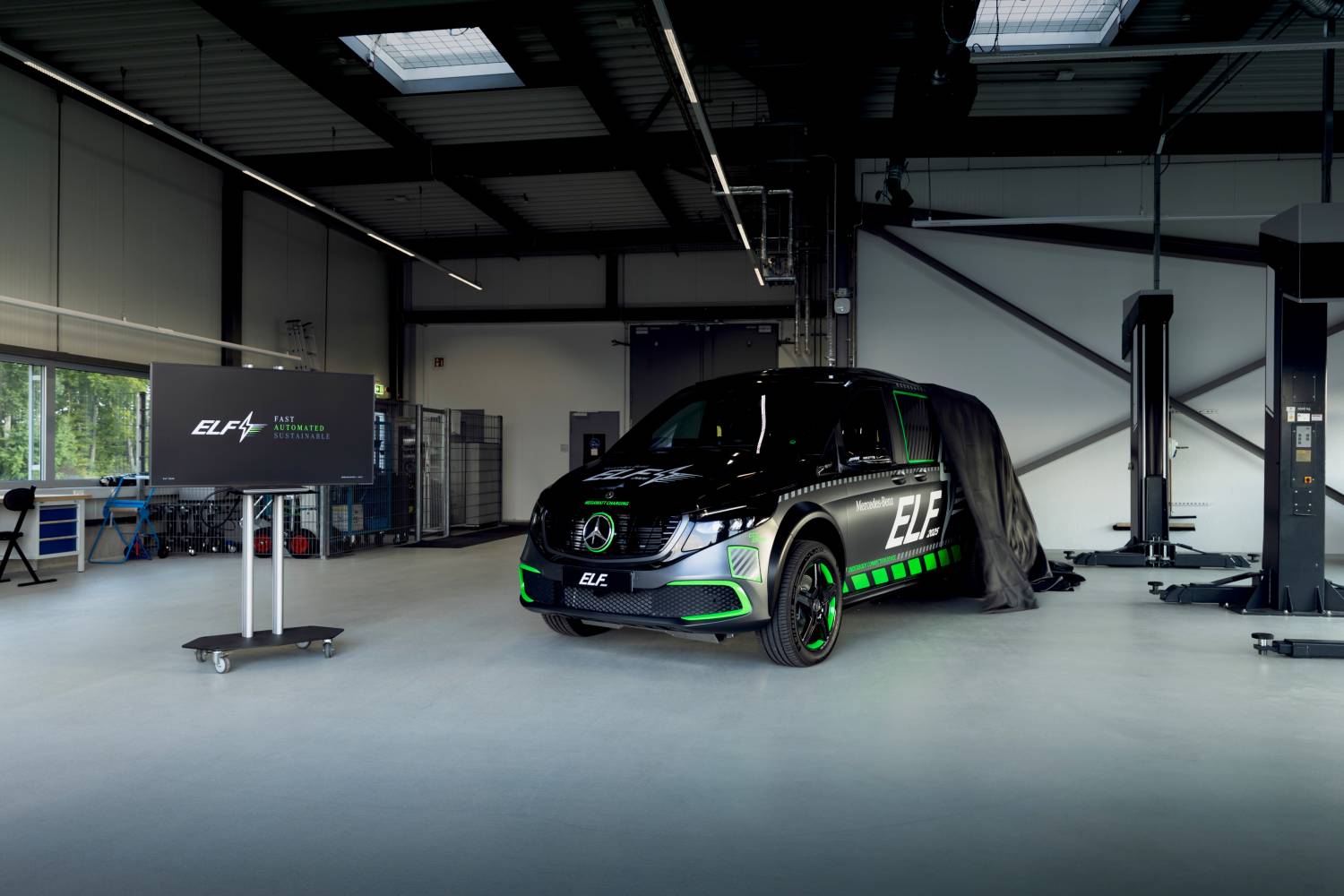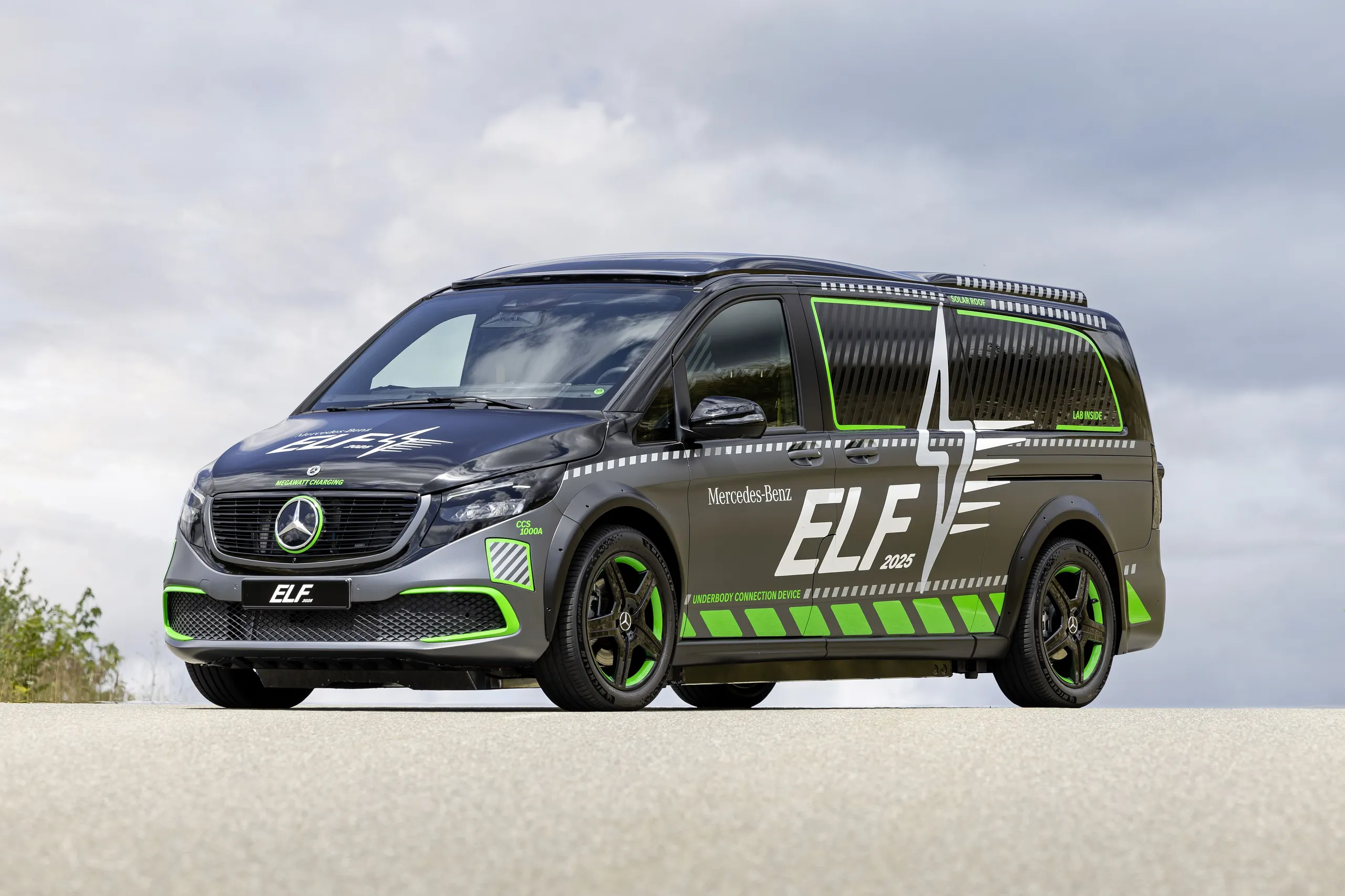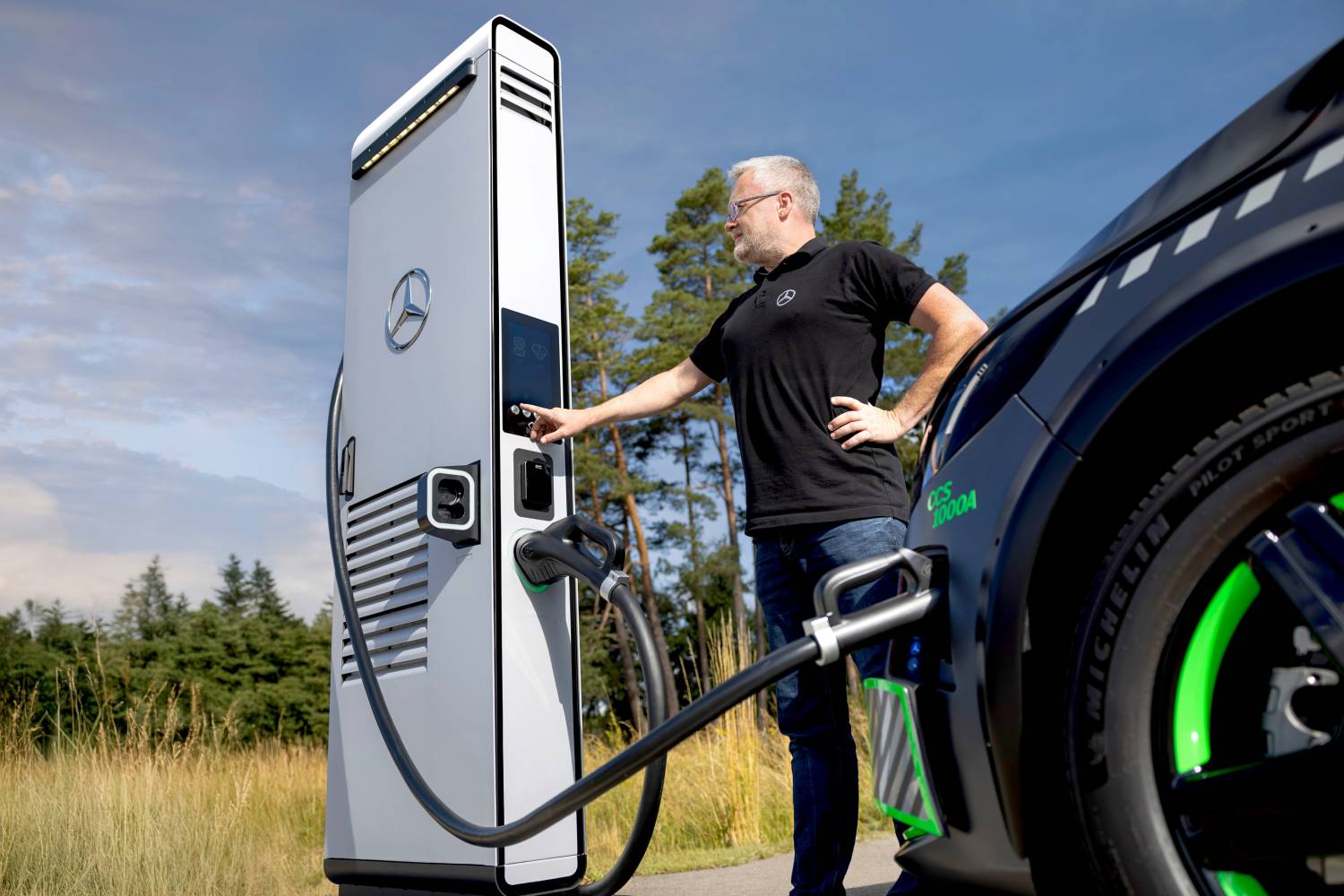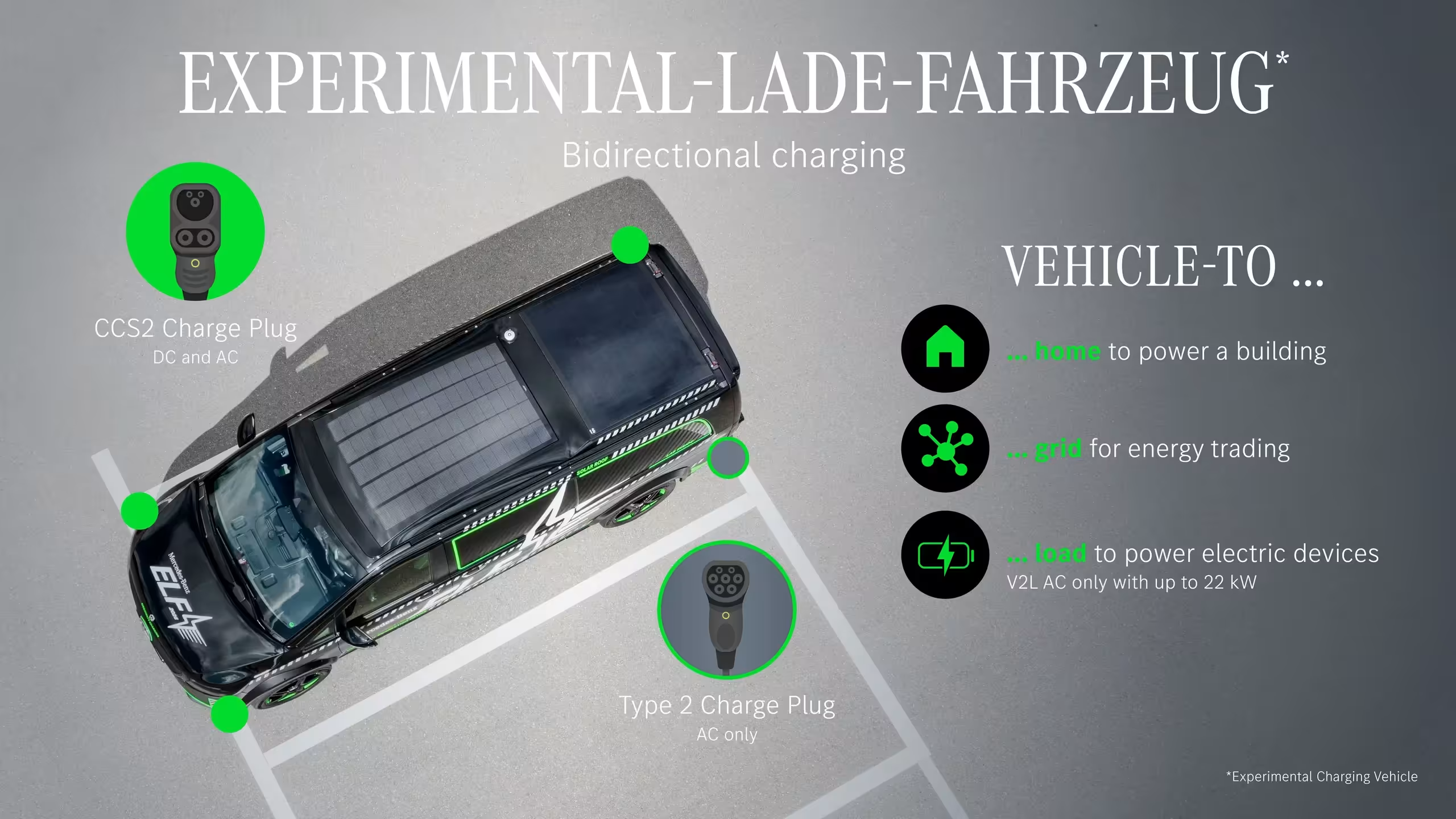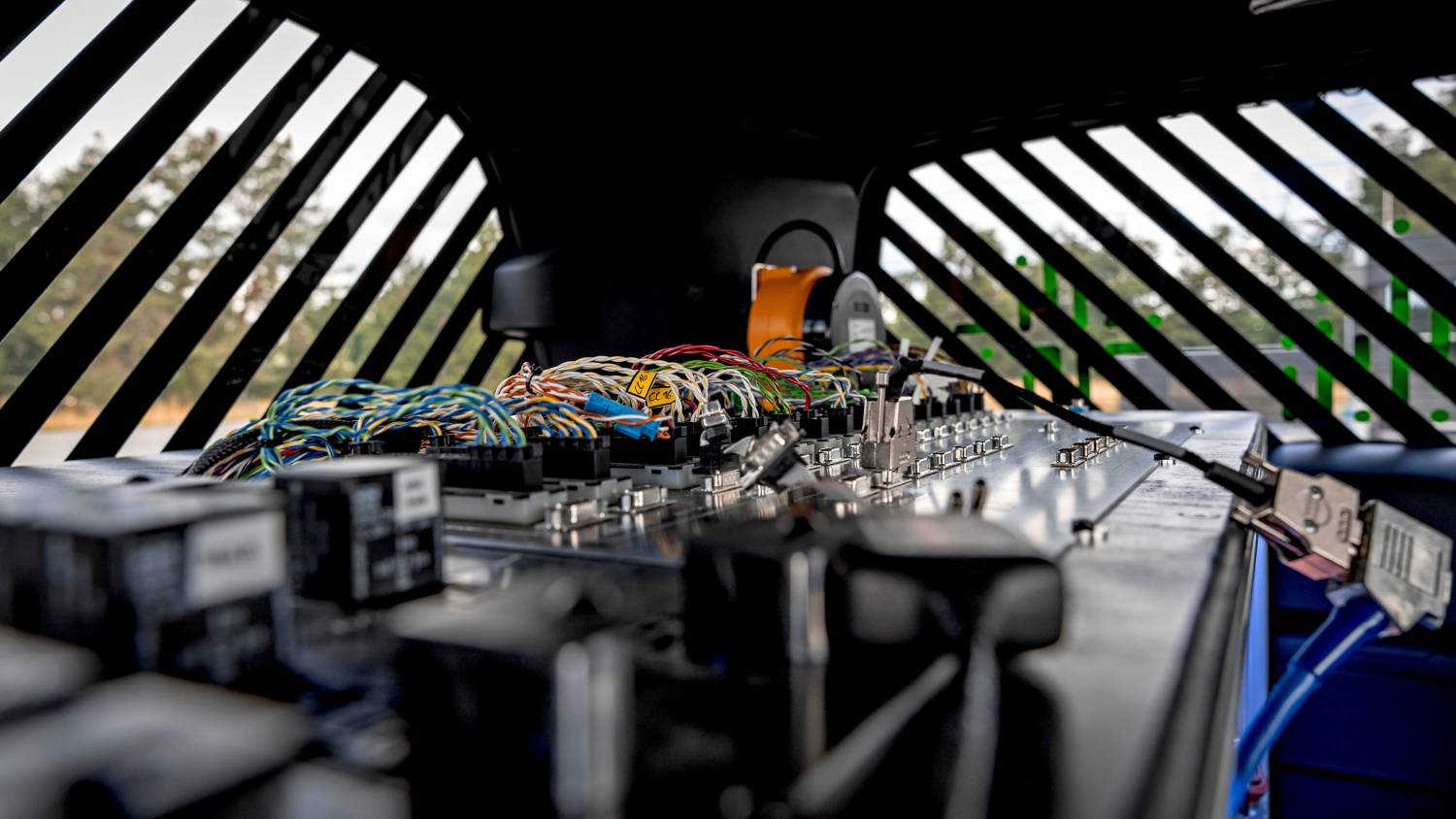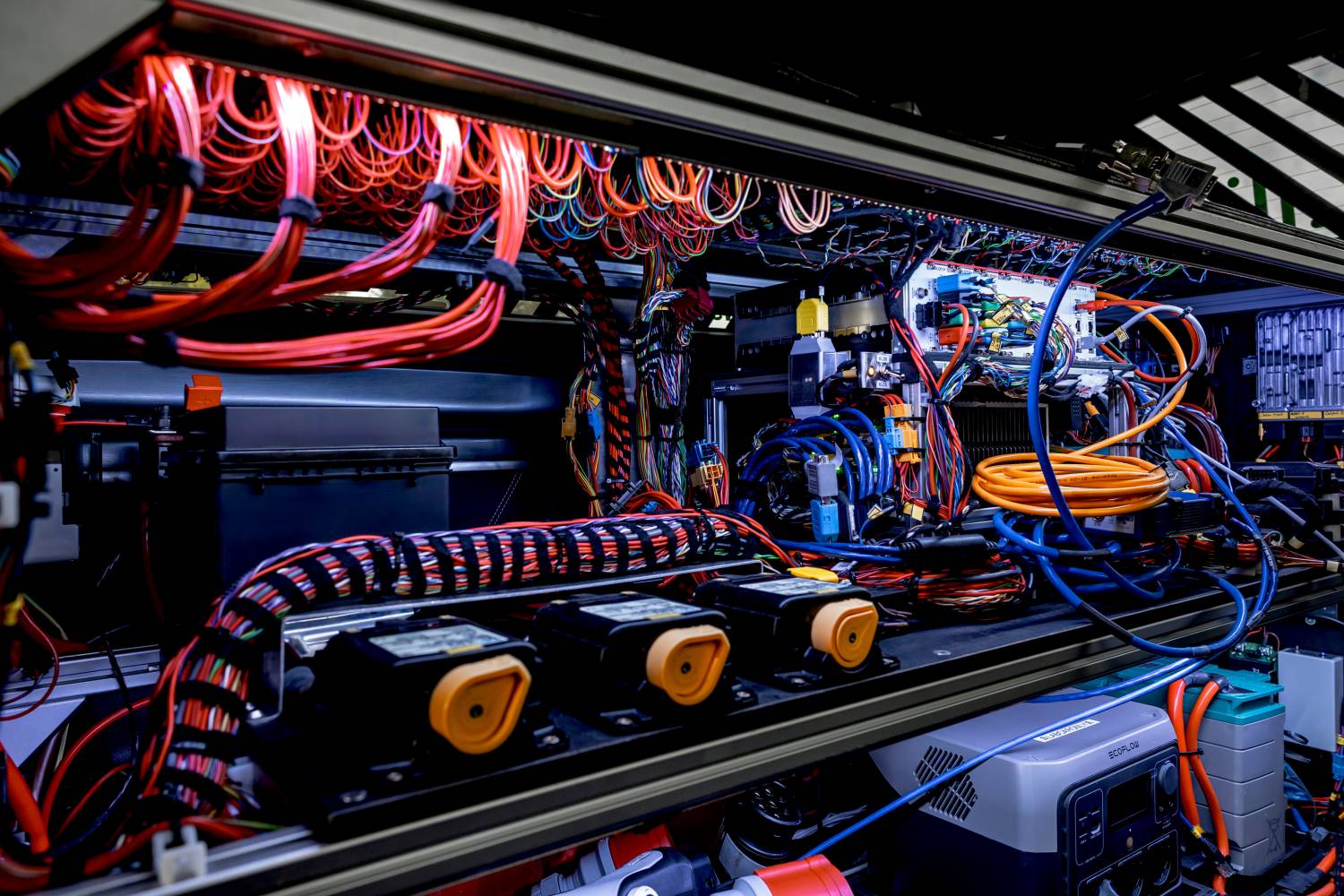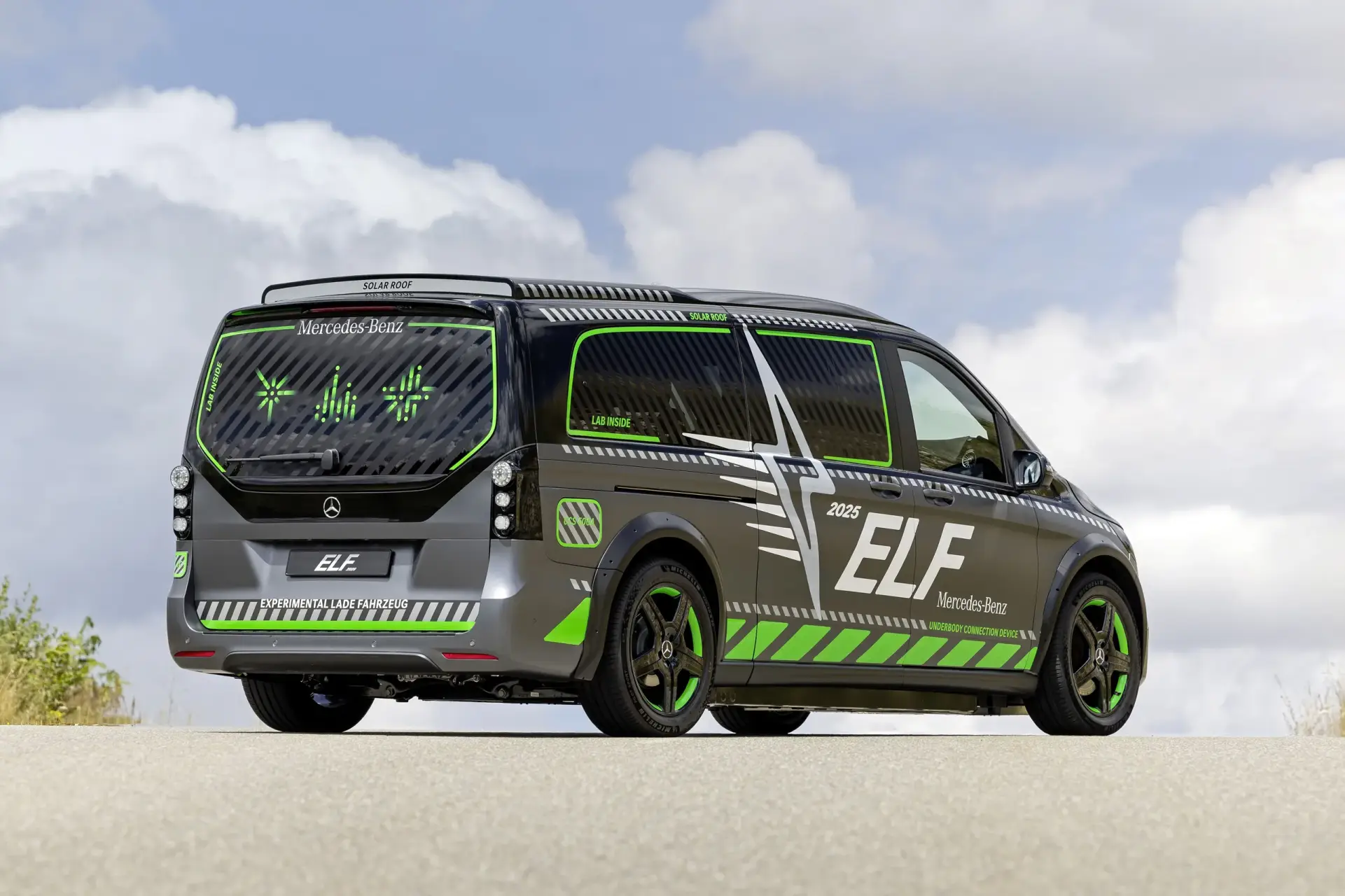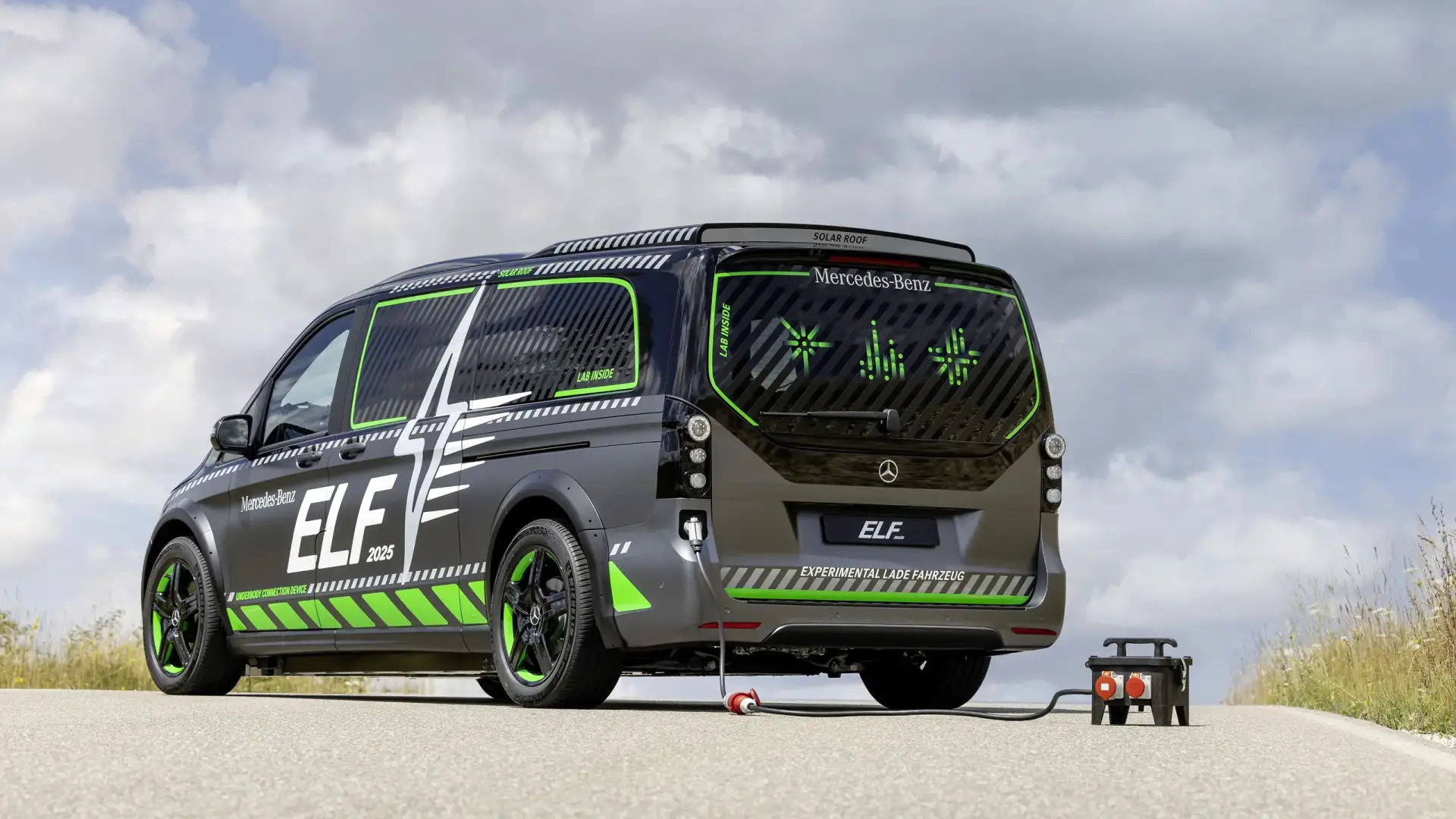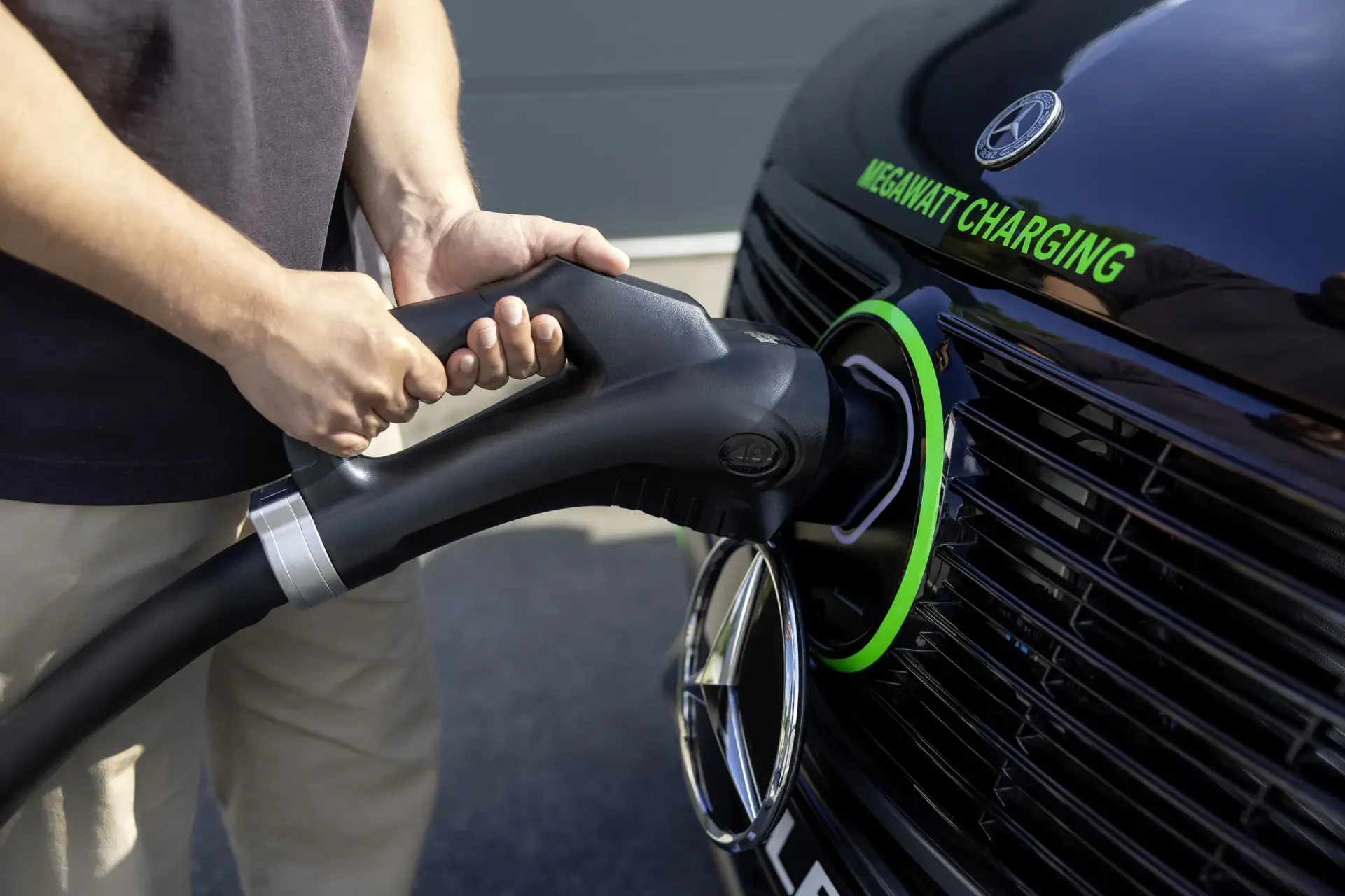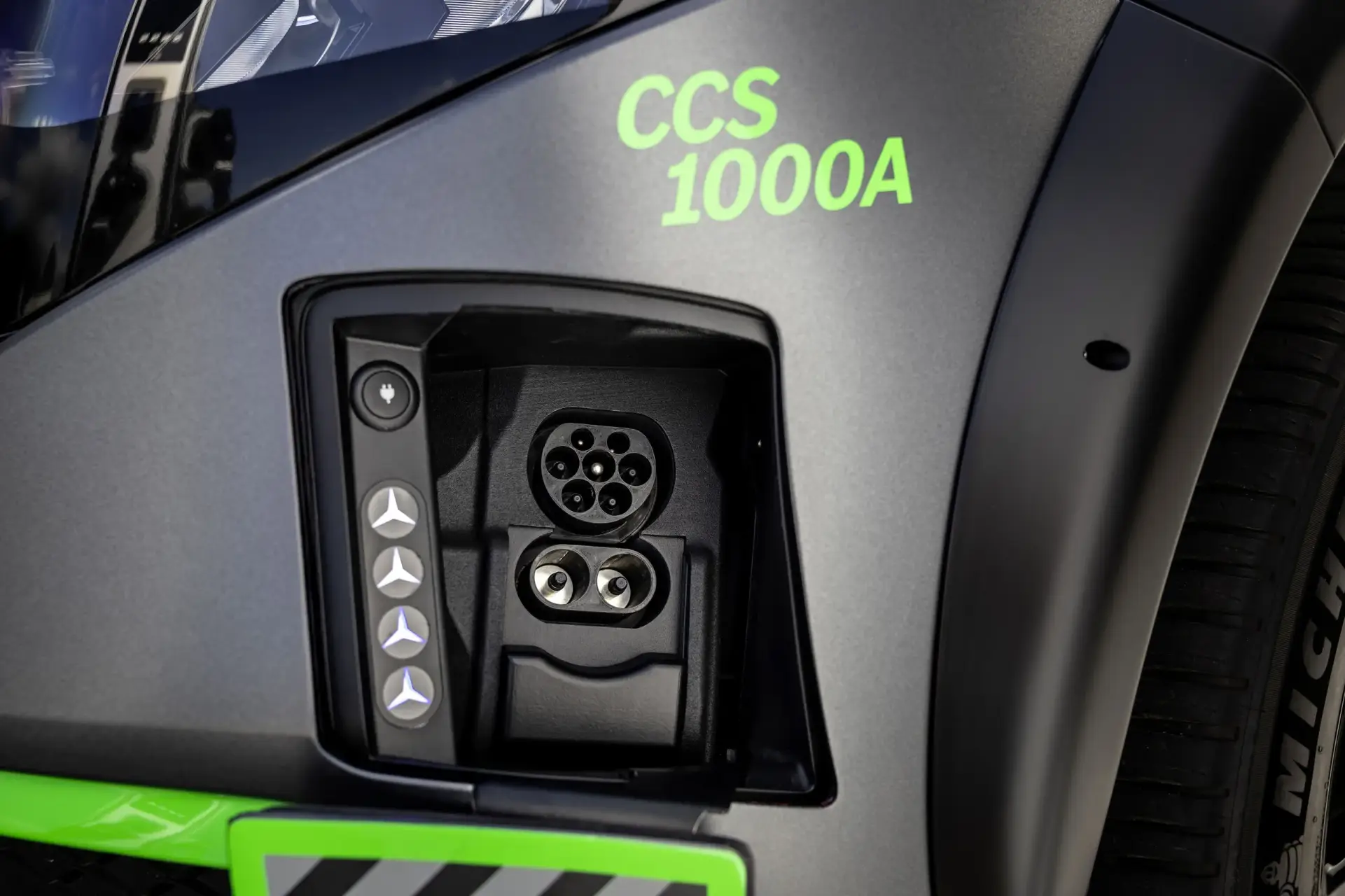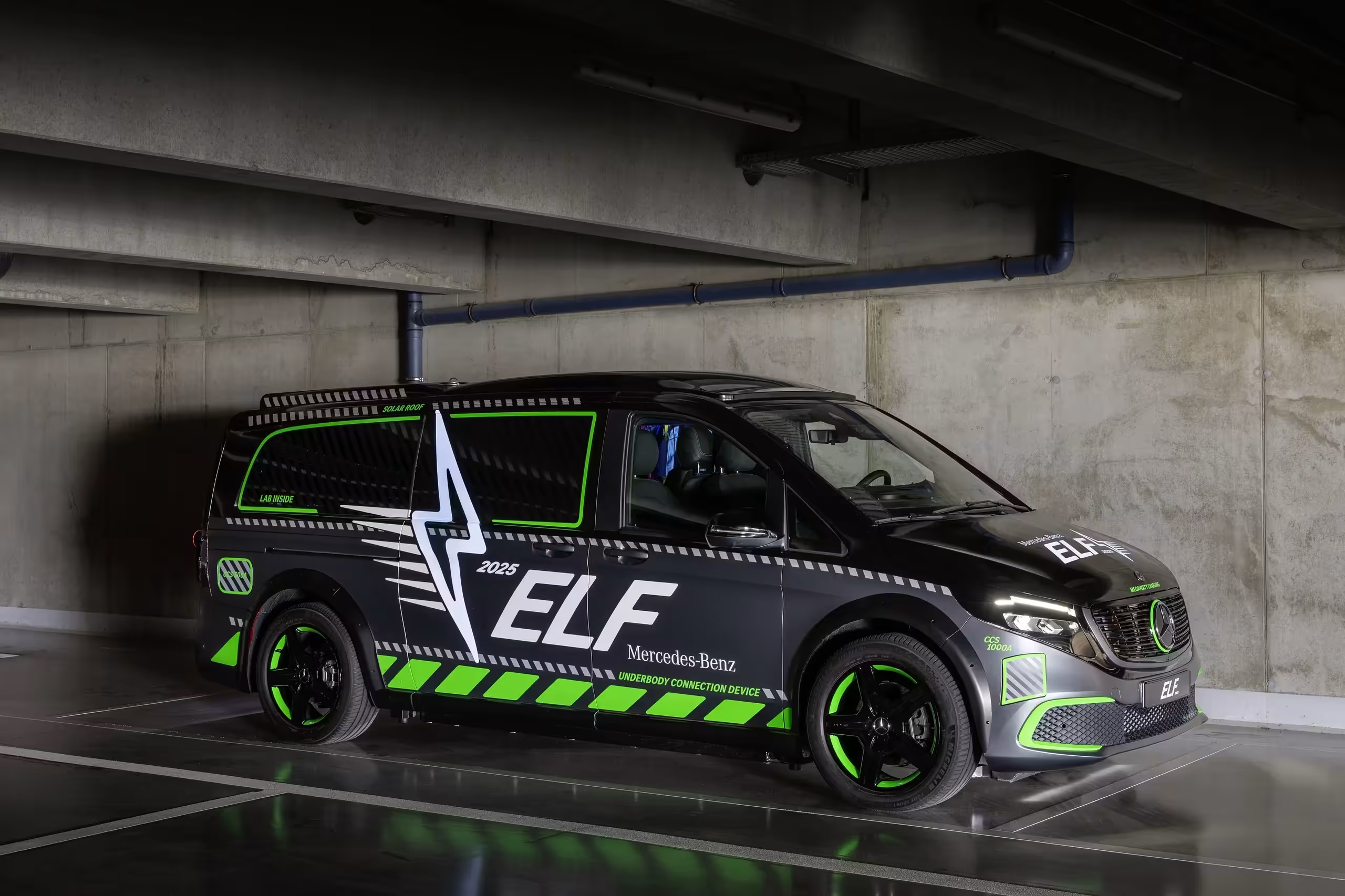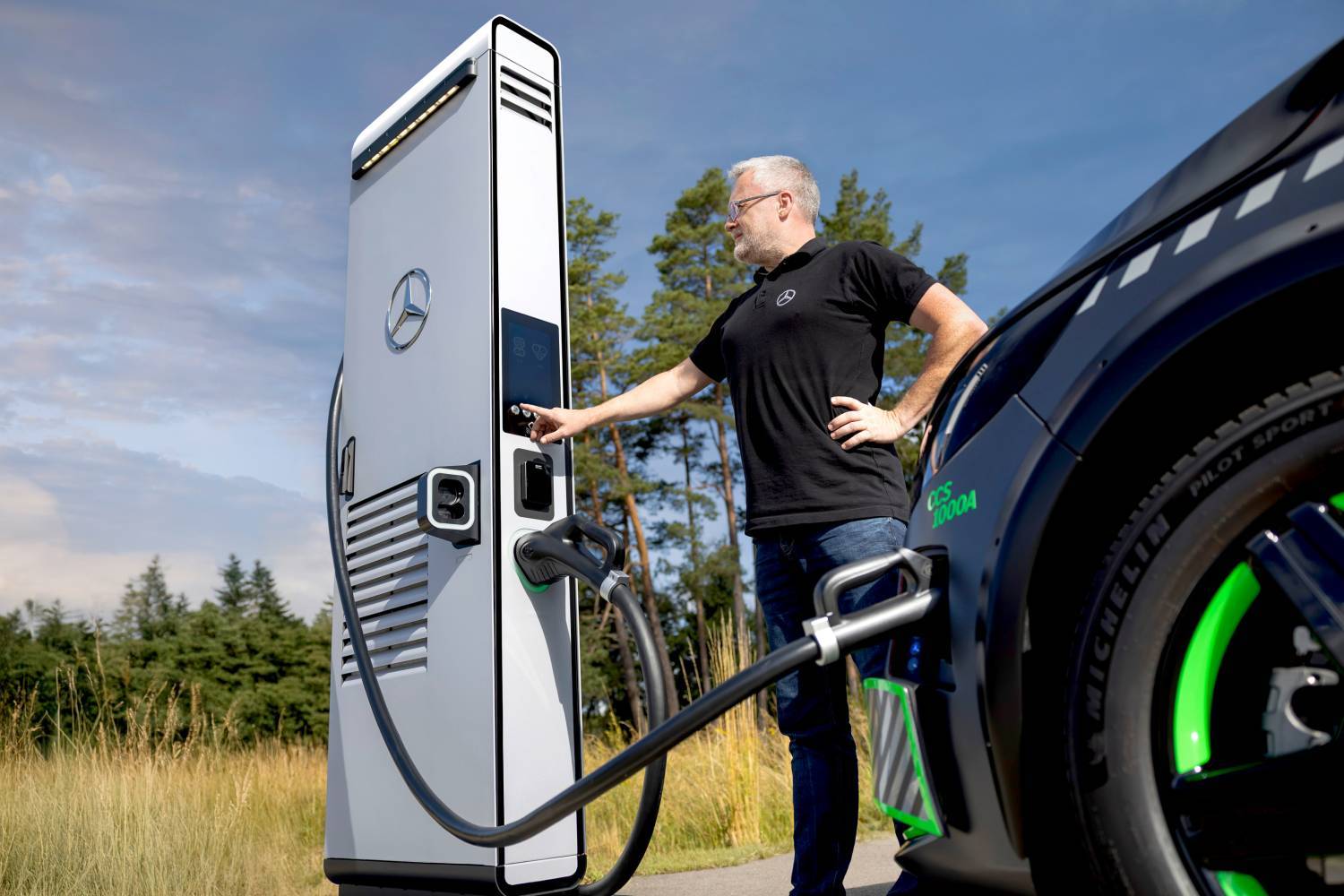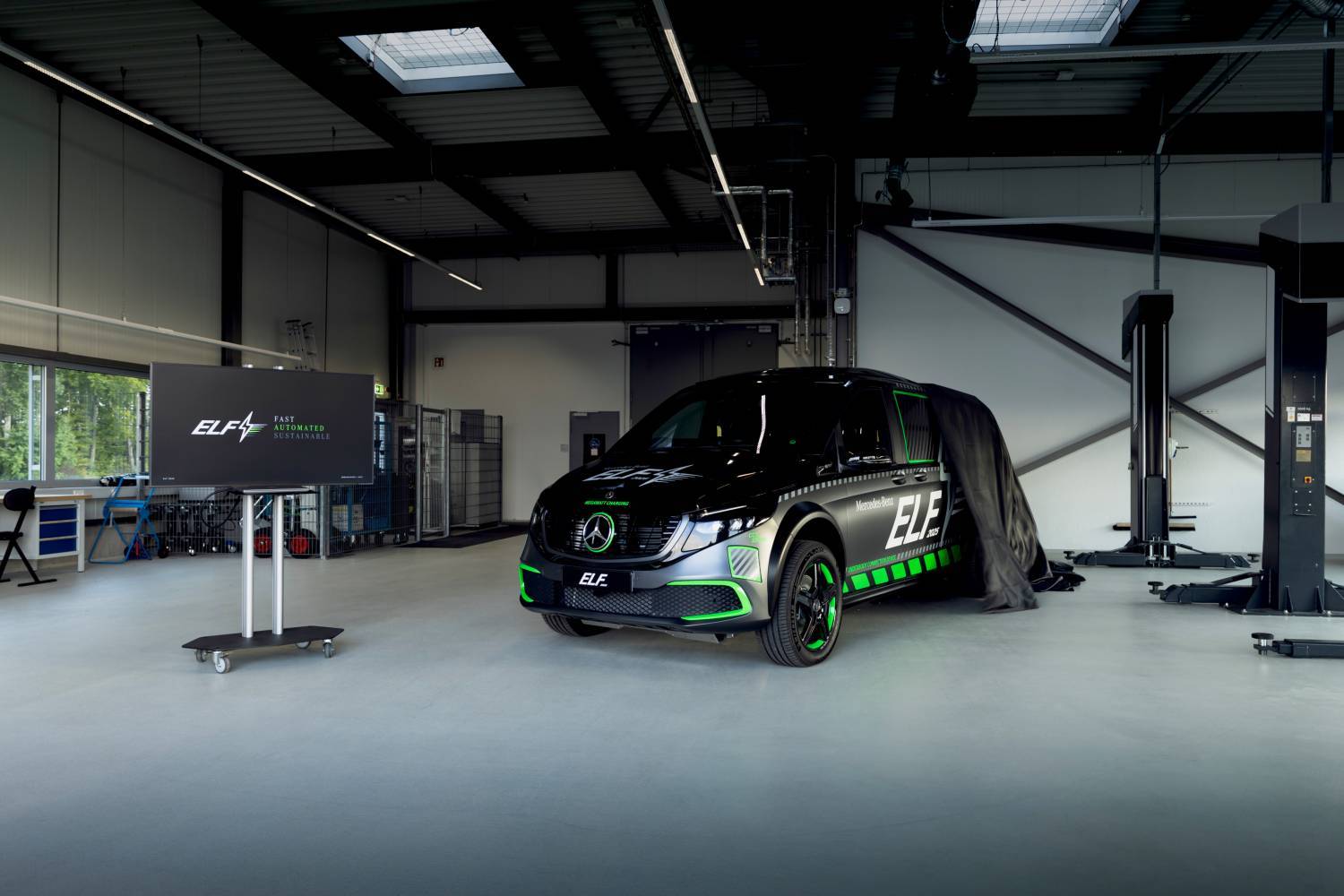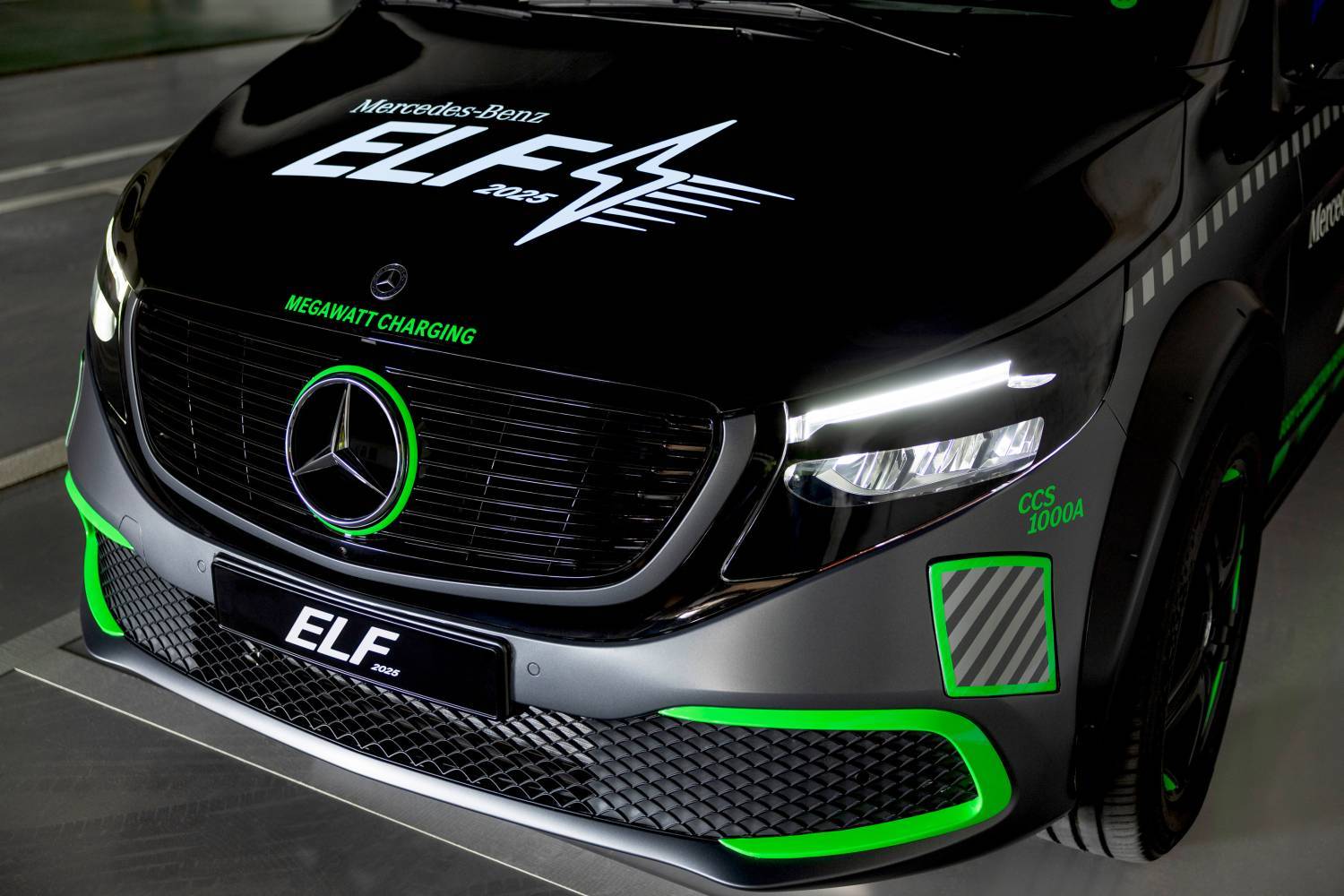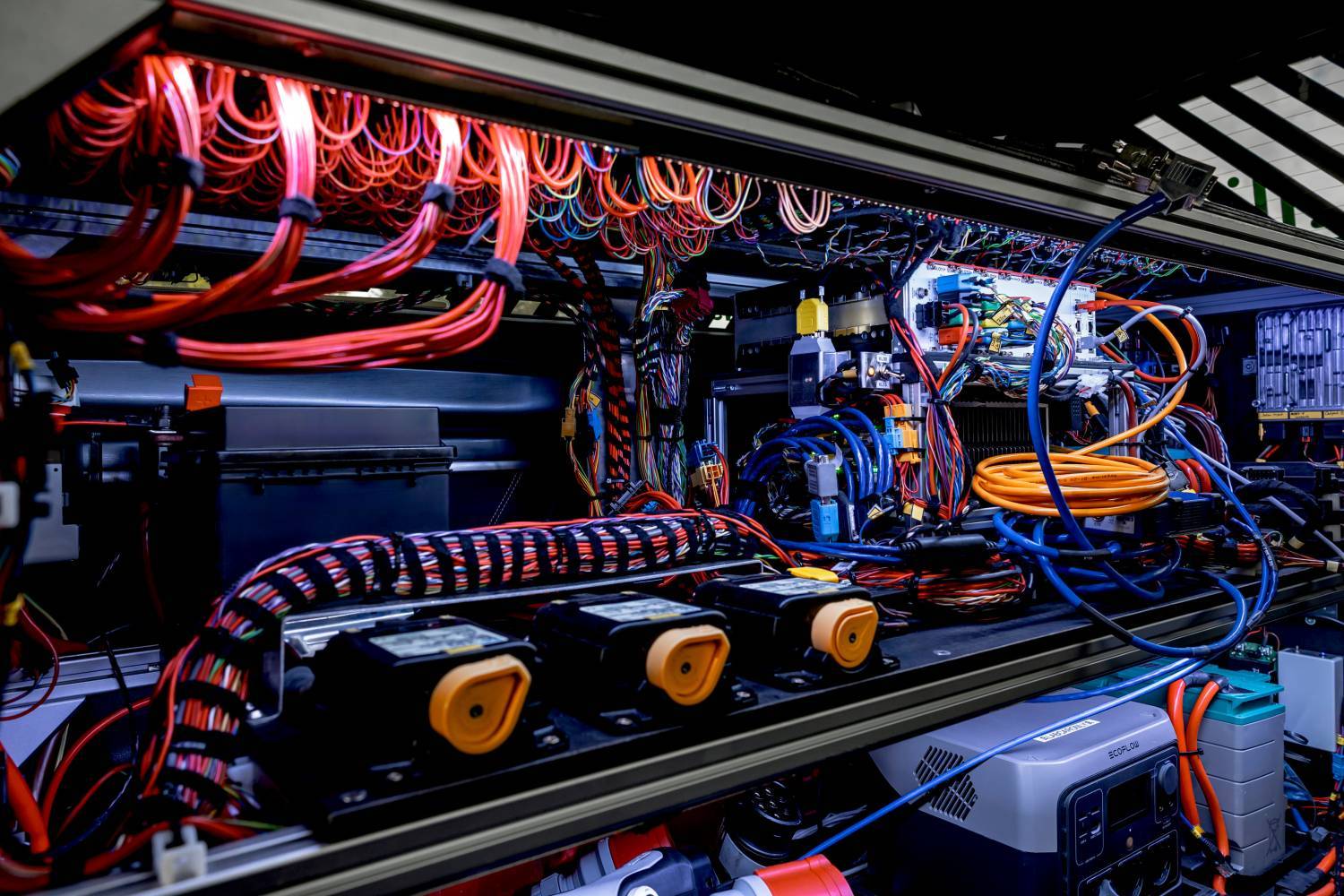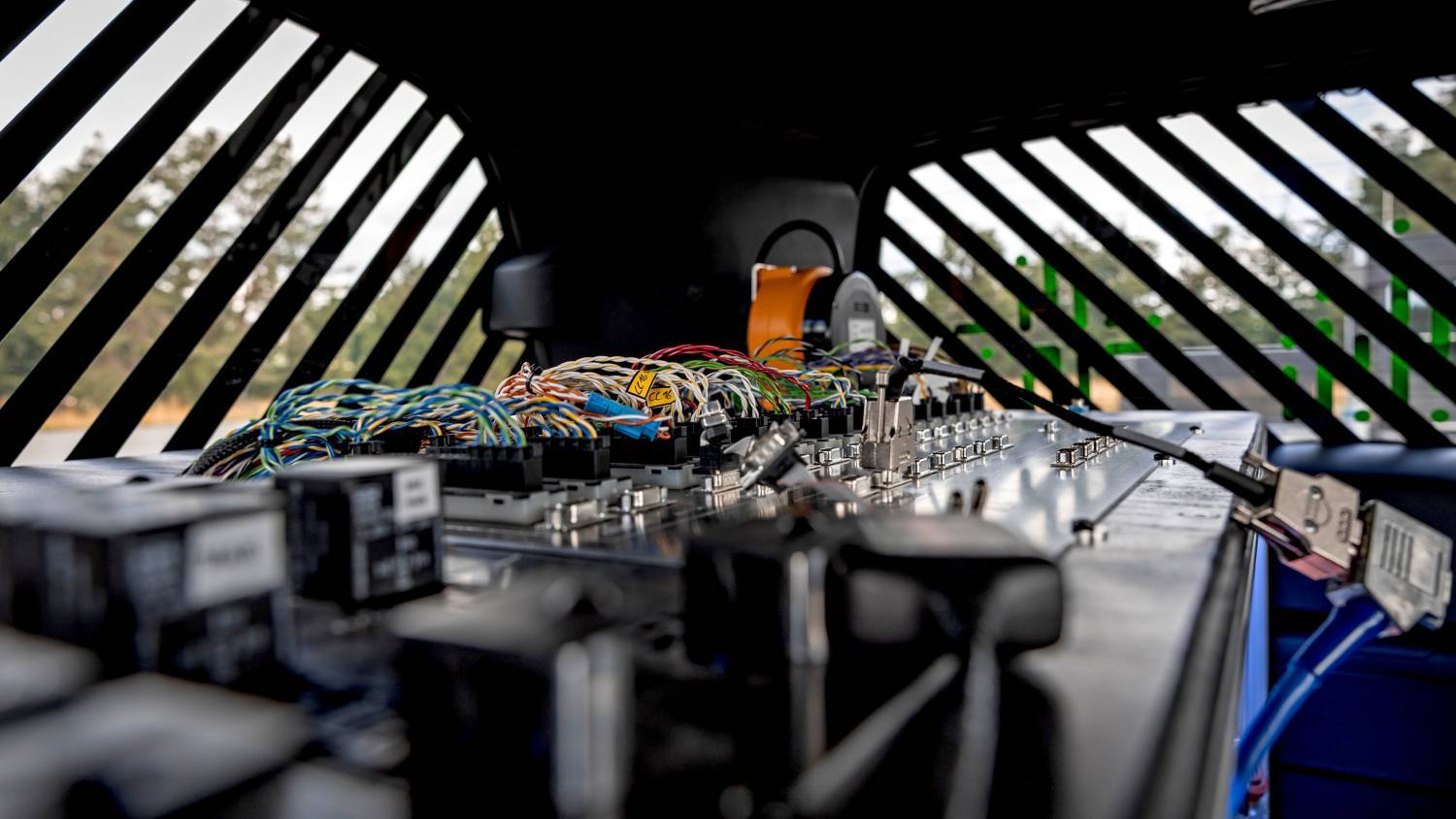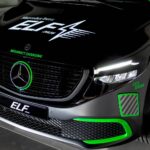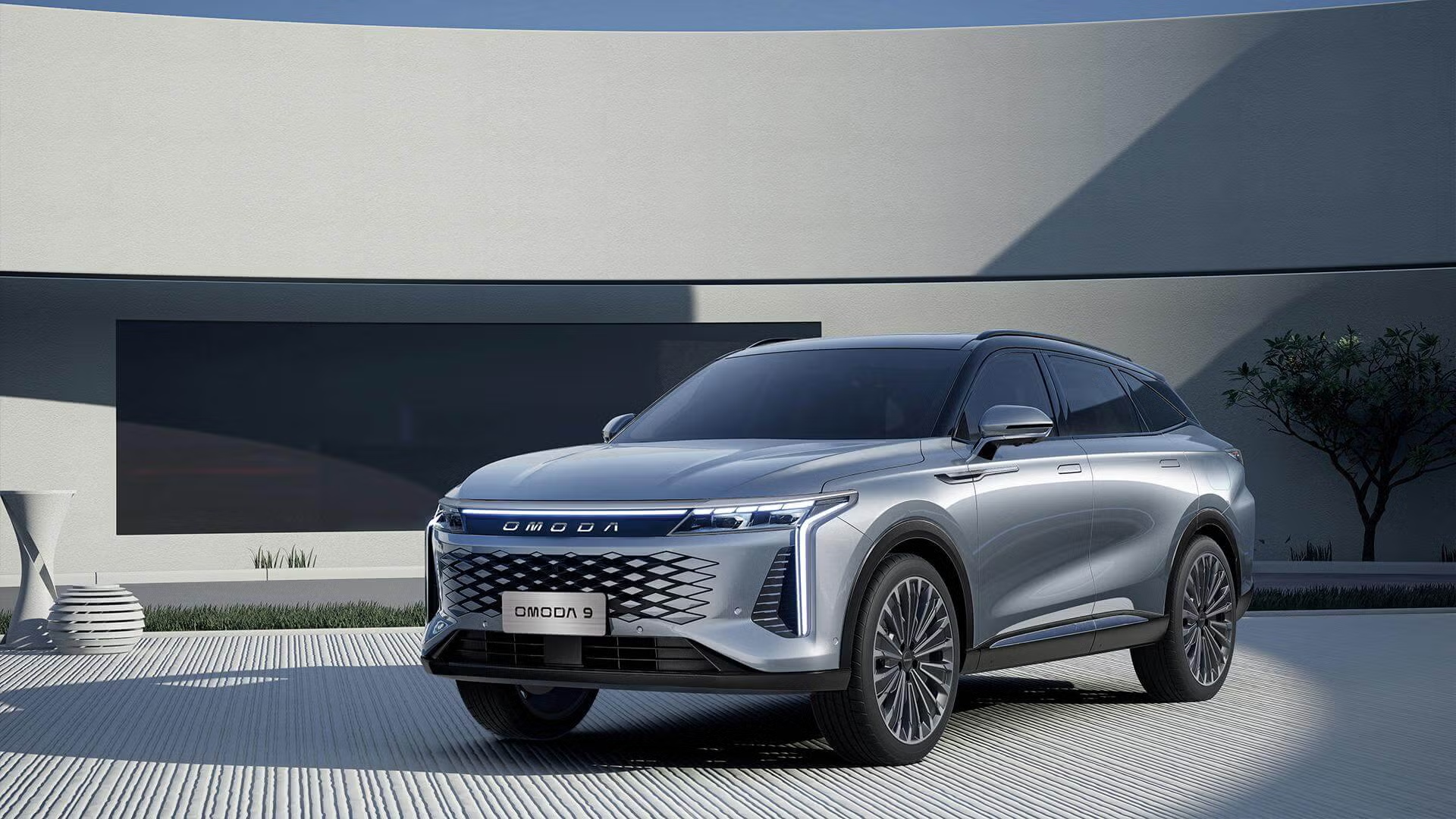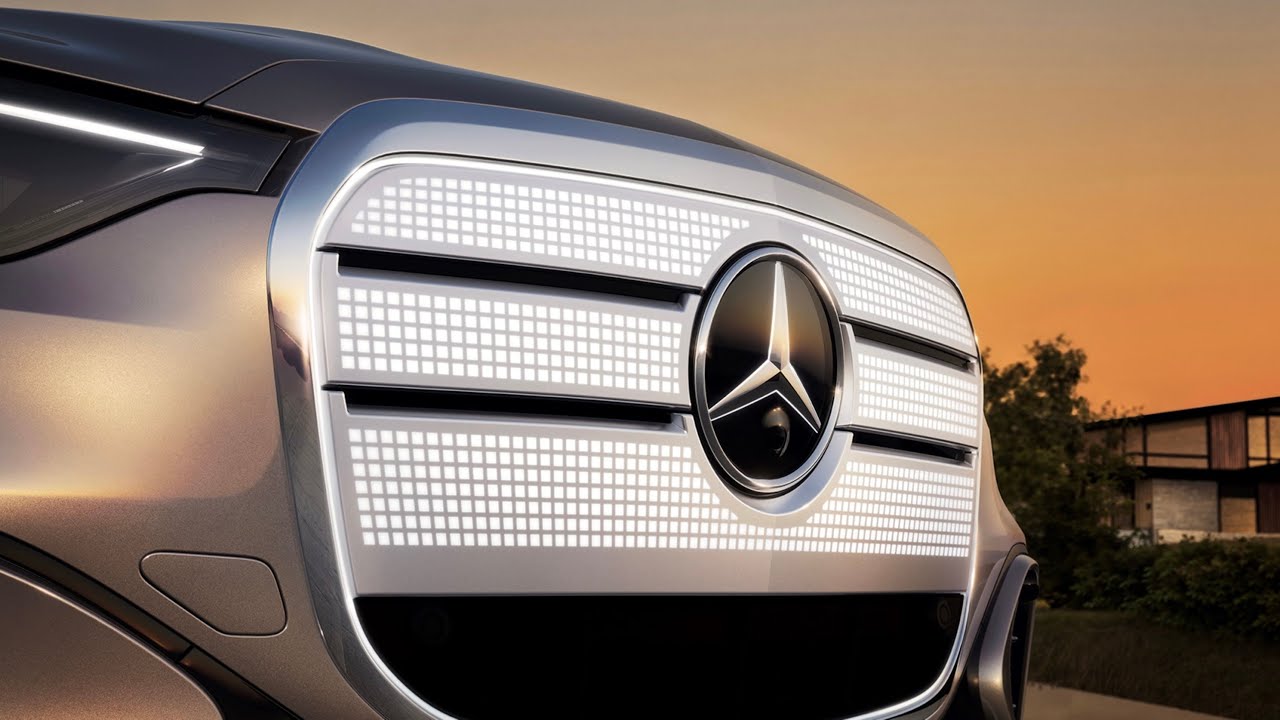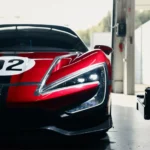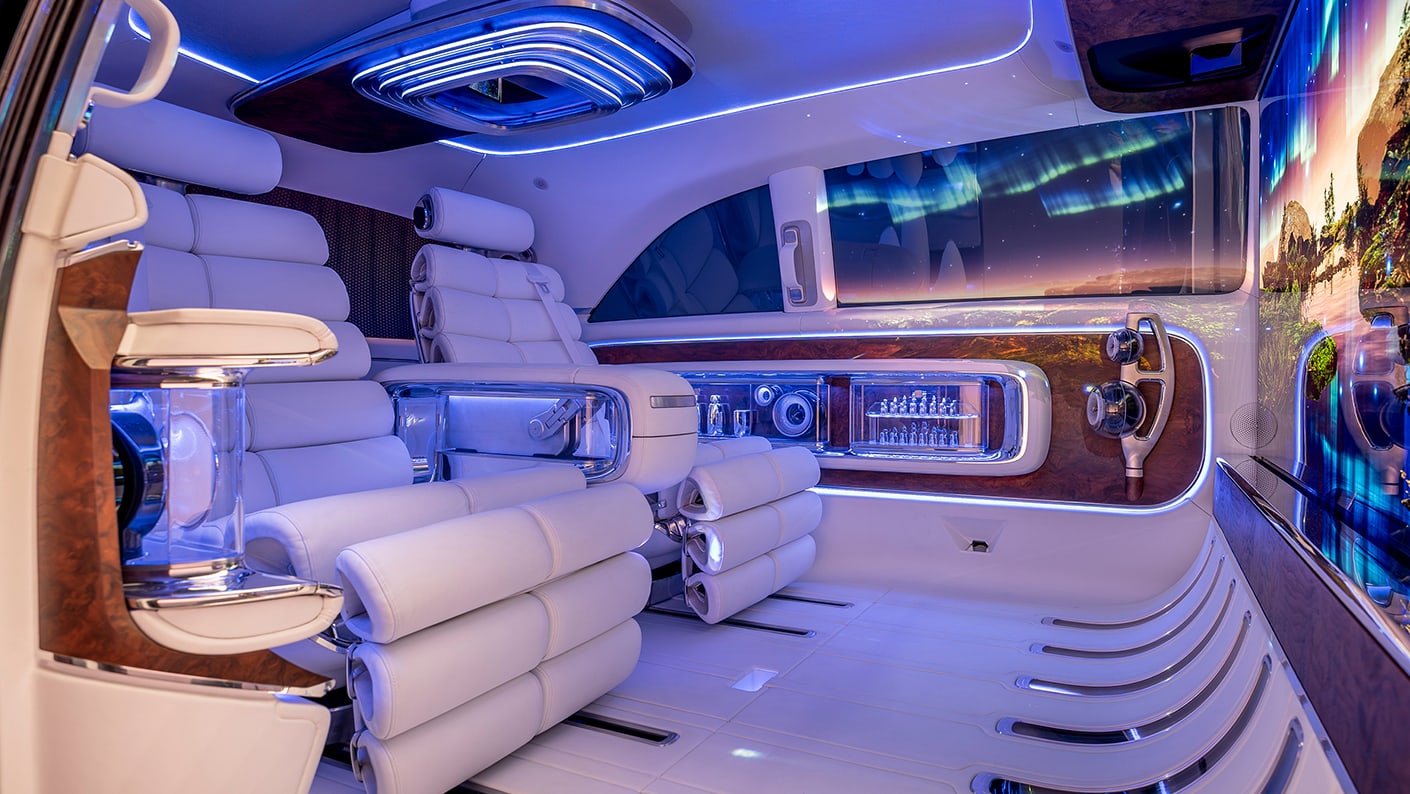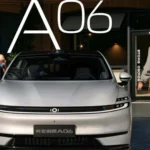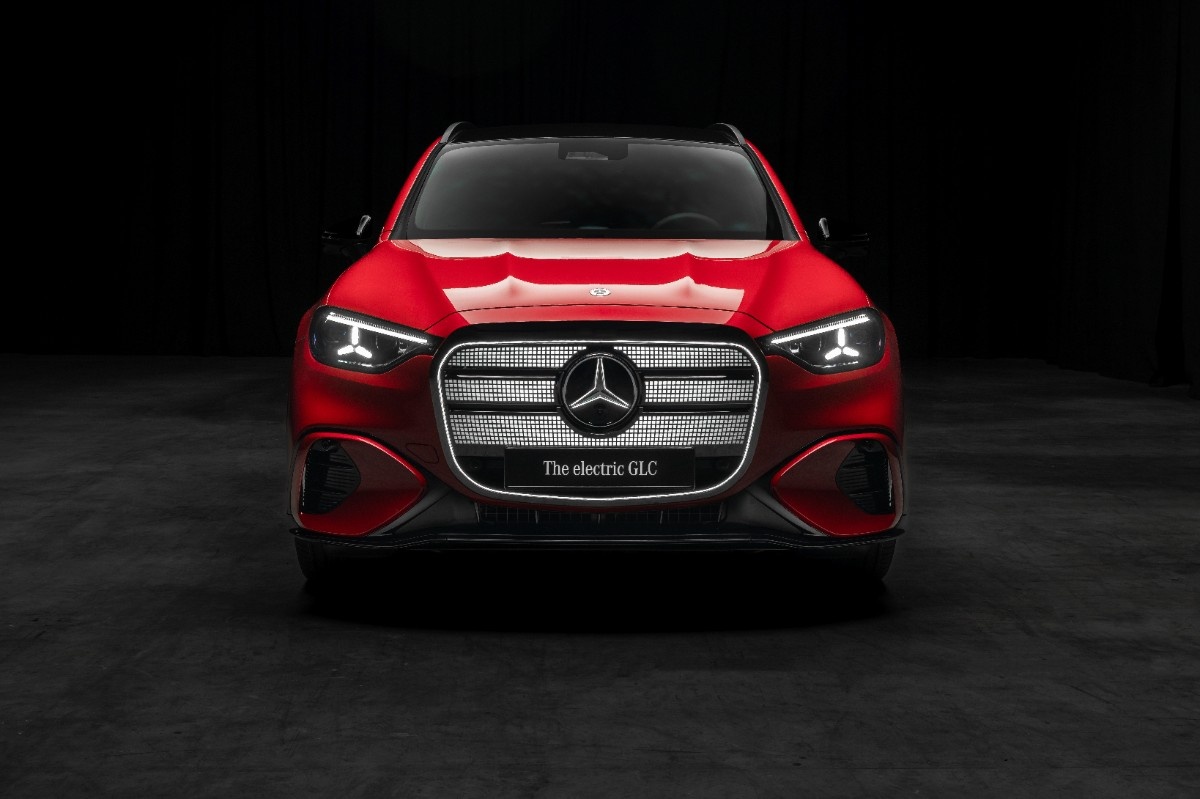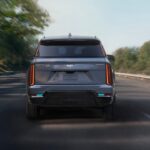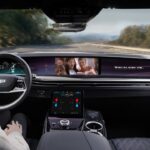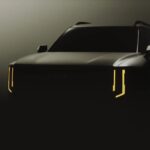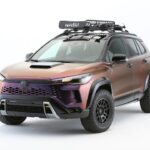Mercedes-Benz dropping the ELF on October 9, 2025, feels like the universe listened. This isn’t your average prototype—it’s a V-Class van tricked out as a mobile mad scientist’s lair, probing every corner of EV charging from blistering speeds to off-grid wizardry. I dug into the reveal, and honestly, it’s got me rethinking range anxiety as a relic of the past. Mercedes calls it the Experimental-Lade-Fahrzeug (ELF for short), and it’s their love letter to sustainable zaps that could make electric driving as painless as grabbing a latte.
What hits different here? ELF isn’t isolated tech demos; it’s a holistic mashup—ultra-fast plugs, bidirectional brainpower, solar smarts, and even hands-free vibes—all in one rig. Born from an interdisciplinary squad of gearheads and green thinkers, it’s Mercedes flexing as the EV pioneer, building on hits like their 2019 MB.CHARGE Public network and 2021 Plug & Charge ease. Social media’s already lit—Electrek called it a “mobile EV charging rig for megawatt power,” and X users are geeking over the 10-minute top-ups. Let’s unpack why this could flip the script on how we power our rides.
Blasting Past Limits: Dual Fast-Charging That Redefines “Quick Stop”
Fast charging’s the EV bottleneck—ELF’s here to smash it. Rocking two systems, it’s like Mercedes built a Swiss Army knife for juice. The Megawatt Charging System (MCS) connector? That’s the beast-mode option, cooked up for trucks but tested here on passenger vibes. It probes thermal guts—batteries, cables, electronics—under mega loads, feeding insights for long-haul fleets with zero downtime dreams.
Flip to the CCS (Combined Charging System) side, and it’s everyday hero stuff. ELF cranks up to 900 kW, slurping 100 kWh in a scant 10 minutes—enough for a full afternoon’s errands without breaking a sweat. Components are near-production ready, simulating real-world pit stops at highways or city hubs. This tech’s bleeding into upcoming models, like the wild CONCEPT AMG GT XX that guzzled 1,041 kW peaks and added 400 km (WLTP) in five minutes flat. Teamed with Alpitronic (Euro charging kings), they hacked a CCS cable for 1,000 amps—double the old standard—using truck-station cooling tricks. Tested in Stuttgart’s labs, it’s holistic dev at its finest: car and station evolving hand-in-glove.
Picture this on your next road trip: Pull in, sip coffee, pull out recharged. Shorter waits mean more miles, less fuss—pure Mercedes convenience. And with their charging parks on the horizon, expect this speed to hit public spots soon.
Bidirectional Brilliance: Your EV as a Backup Battery and Cash Cow
Here’s the mind-bender: ELF turns EVs from energy hogs into givers. Bidirectional charging—AC and DC—lets power flow both ways, making your Mercedes a grid hero. Vehicle-to-Home (V2H) for blackouts? Check. Vehicle-to-Grid (V2G) to sell surplus at peak prices? Yup. Even Vehicle-to-Load (V2L) for powering tools on-site.
AC’s wallet-friendly for home hookups, feeding wallboxes or devices, though grid tweaks add complexity. DC? High-efficiency beast, pairing sweet with solar and storage for seamless V2G/V2H. Mercedes has skin in the game—nailed it in Japan with CHAdeMO, now prepping CCS for the all-electric CLA and GLC EQ. Rollout hits 2026 in Germany, France, UK, bundled in MB.CHARGE Home with apps for smart timing. Crunch it: Families could save ~€500 yearly (~10,000 free km), slashing bills via solar syncs.
A 70-100 kWh pack? That’s 2-4 days of home juice in outages, or targeted solar storage to cut CO₂. X chatter’s buzzing about this “virtual energy account” idea—credit surplus PV power for later use at home or Mercedes stations, easing grid strain. It’s not just tech; it’s empowerment, turning EVs into energy transition MVPs.
Cable? What Cable? Inductive and Automated Charging for Effortless Zaps
Fumble-proof your future with ELF’s wireless wonders. Inductive charging beams 11 kW AC via magnetic resonance—no plugs, just park and power. Ideal for garages or fleets, it’s vetted for varying heights (think robotaxis) and global spots like Asia’s tight lots or South Africa’s safety-first scenes. Efficiency, usability—it’s all on test, promising invisible infrastructure.
Automated conductive? Floor plates chat with your ride, guiding precise parking for a floor-connector link at 11 kW AC. Safer, tidier than cords, with better alignment than inductive. Perfect for premium or accessible setups, minimizing wear and hazards. Robotics amp it up for fast-charge fleets, auto-connecting beefy cables sans hands.
Mercedes’ Charging Unit’s steering this, expanding their global network for all-brand bliss. It’s rethinking infra—less clutter, more flow.
Why ELF’s the Spark EVs Need Right Now
Flaws? It’s a van-lab, not a showroom stunner, and rollout’s phased. But the wins—seamless Green Charging with renewables, Plug & Charge simplicity—position Mercedes as the thoughtful trailblazer. Against Porsche or BMW? ELF’s ecosystem edge shines, blending vehicle, grid, and cloud for true decarbonization.
I’m sold—this could make EVs the default by making charging forgettable. Stuttgart’s team? Heroes. What’s your take: V2G savings or wireless ease first? Drop it below.
ELF Essentials: The Tech at a Glance
- Fast Charge: MCS for MW extremes; CCS up to 900 kW (100 kWh/10 min)
- Bidirectional: AC/DC V2H/V2G/V2L; 2026 services, ~€500/yr savings
- Wireless/Automated: 11 kW inductive resonance; floor-plate conductive
- Partners/Perks: Alpitronic 1,000A prototype; solar/virtual account integration
- Impact: 400 km in 5 min (AMG GT XX); 2-4 days home power
Reveal pics scream “future’s here”—that underbelly’s a tech feast. More EV deep dives coming; subscribe!
